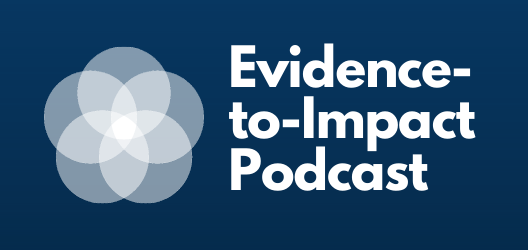
Episode Overview
For this month’s episode, we examined how the pandemic has revealed the “hidden crisis” of food insecurity throughout Pennsylvania and the rest of the country.
According to the U.S. Office of Disease Prevention and Health Promotion, food insecurity is defined as the disruption of food intake or eating patterns because of lack of money or other resources. For example, this could mean cutting down on the number of meals or changing the types of food that you eat to save money.
Since the beginning of the pandemic, the issue of food insecurity moved to the forefront as many people lost their jobs, schools went virtual and scrambled to set up school lunch pickups, supply chains stumbled, and food banks and community refrigerators flooded with people seeking food to feed their families. While we would argue that food insecurity was never a “hidden crisis,” the pandemic worsened it for many children and families.
We spoke to Muzi Na, Ph.D., M.H.S., Assistant Professor of Nutritional Sciences and the Broadhurst Career Development Professor for the Study of Health Promotion and Disease Prevention at Penn State University, and Vonda Ramp, M.S., R.D., State Director of Child Nutrition Programs at the Division of Food and Nutrition in the Bureau of Budget and Fiscal Management within the Pennsylvania Department of Education (PA DOE), about who has been impacted by food insecurity and what is being done to help people access healthy food in their communities.
Episode Resources and Notes
- SSRI “Insights from the Experts” COVID-19 Blog Series: Food insecurity in Pennsylvania during the COVID-19 pandemic: Addressing immediate concerns and opportunities for the future
- JAMA Network Open: Disparities in Diet Quality in School-Age Children—Opportunities and Challenges
Dr. Na discusses something called the 24-hour recall method following a question about how to measure the nutritional and health concerns related to food insecurity. According to the National Institutes of Health, the 24-hour dietary recall method is a structured interview intended to capture detailed information about all foods and beverages (and possibly consumed by the respondent in the past 24 hours, most commonly, from midnight to midnight the previous day.
Ms. Ramp references how the PA DOE has applied for over 80+ U.S. Department of Agriculture child nutrition program waivers since the pandemic began. At this time, the PA DOE has applied to over 90 waivers.
Key Information
SourceEvidence-to-Impact Collaborative
Publication DateMay 14, 2021
Resource TypeAudio
Recent Podcast Episodes
Share This Page
Episode Overview
For this month’s episode, we examined how the pandemic has revealed the “hidden crisis” of food insecurity throughout Pennsylvania and the rest of the country.
According to the U.S. Office of Disease Prevention and Health Promotion, food insecurity is defined as the disruption of food intake or eating patterns because of lack of money or other resources. For example, this could mean cutting down on the number of meals or changing the types of food that you eat to save money.
Since the beginning of the pandemic, the issue of food insecurity moved to the forefront as many people lost their jobs, schools went virtual and scrambled to set up school lunch pickups, supply chains stumbled, and food banks and community refrigerators flooded with people seeking food to feed their families. While we would argue that food insecurity was never a “hidden crisis,” the pandemic worsened it for many children and families.
We spoke to Muzi Na, Ph.D., M.H.S., Assistant Professor of Nutritional Sciences and the Broadhurst Career Development Professor for the Study of Health Promotion and Disease Prevention at Penn State University, and Vonda Ramp, M.S., R.D., State Director of Child Nutrition Programs at the Division of Food and Nutrition in the Bureau of Budget and Fiscal Management within the Pennsylvania Department of Education (PA DOE), about who has been impacted by food insecurity and what is being done to help people access healthy food in their communities.
Episode Resources and Notes
- SSRI “Insights from the Experts” COVID-19 Blog Series: Food insecurity in Pennsylvania during the COVID-19 pandemic: Addressing immediate concerns and opportunities for the future
- JAMA Network Open: Disparities in Diet Quality in School-Age Children—Opportunities and Challenges
Dr. Na discusses something called the 24-hour recall method following a question about how to measure the nutritional and health concerns related to food insecurity. According to the National Institutes of Health, the 24-hour dietary recall method is a structured interview intended to capture detailed information about all foods and beverages (and possibly consumed by the respondent in the past 24 hours, most commonly, from midnight to midnight the previous day.
Ms. Ramp references how the PA DOE has applied for over 80+ U.S. Department of Agriculture child nutrition program waivers since the pandemic began. At this time, the PA DOE has applied to over 90 waivers.
Key Information
SourceEvidence-to-Impact Collaborative
Publication DateMay 14, 2021
Resource TypeAudio
Recent Podcast Episodes
Share This Page
LET’S STAY IN TOUCH
Join the Evidence-to-Impact Mailing List
Keep up to date with the latest resources, events, and news from the EIC.













